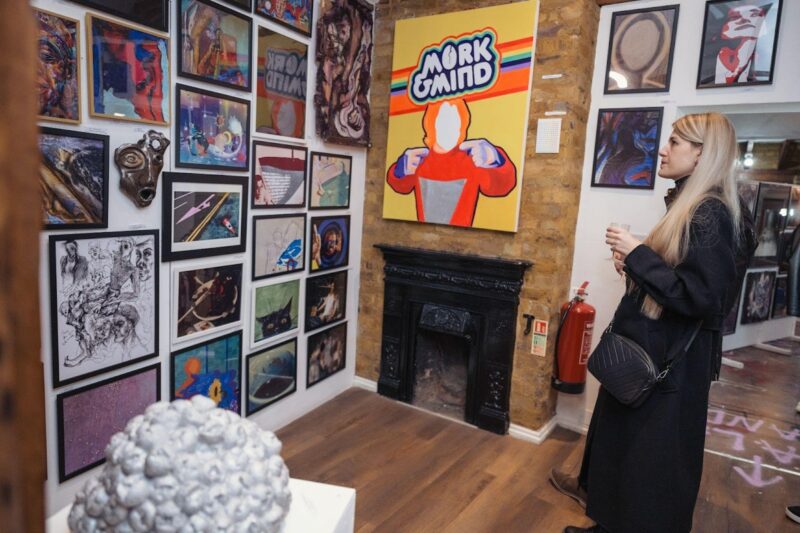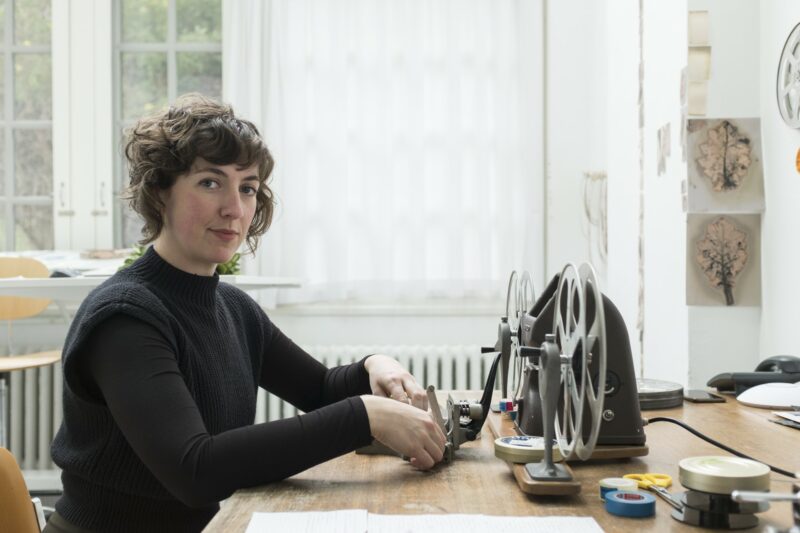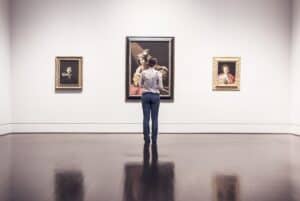Outside, looking in: Richard Saltoun celebrates the role of women in the evolution of Abstract Art-
Richard Saltoun presents ‘Outside, looking in’ in its London gallery. Following its pioneering programme on women artists and their role in art history, the group exhibition celebrates the fundamental role female artists have played in the evolution of abstract art.

Shelagh WAKELY (1932 – 2011), auntitled, 2000 c, bronze leaf applied to paper, 41 x 41 cm ca., © The Estate of the Artist
The exhibition is an ambitious one, spanning forty years and presenting twelve international artists. Including works of photography, painting, textile and ceramics, the show offers a comprehensive survey of brilliant abstract artworks by Lynda Benglis, Shelagh Wakely, Vivian Suter, Joan Snyder, Romany Eveleigh, Annegret Soltau, Jan Wade, Bêla Kolárová, Barbara Levittoux-Swiderska and Rosa Lee.
Displaying such a wide range of techniques and focusing on artists with different backgrounds, the show aims at shedding light onto the circumstances that too often hindered their recognition.
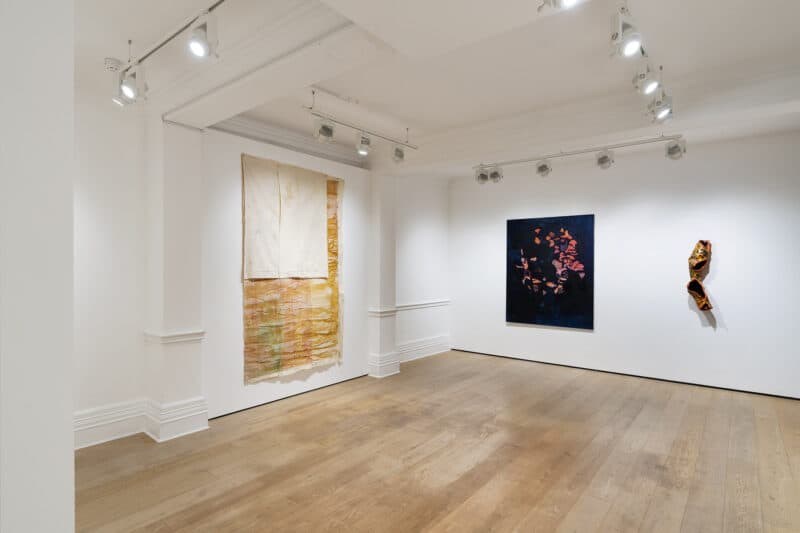
Installation view, courtesy Richard Saltoun, copyright Karen Bengall
It is an age-old story, by now, that of women artists not making it into the canons of traditional art history. In the past years, we have seen the emergence of exhibitions, both in institutions and in the commercial sector, committed to digging into art history trying to bring to the surface all those never enough celebrated artists, mainly (if not always) belonging to underrepresented groups. And yet, despite the recent surveys, essays and conferences trying to shed light on this issue, it is still important to dedicate shows to this matter, to try and change once and for all the canons, and history.
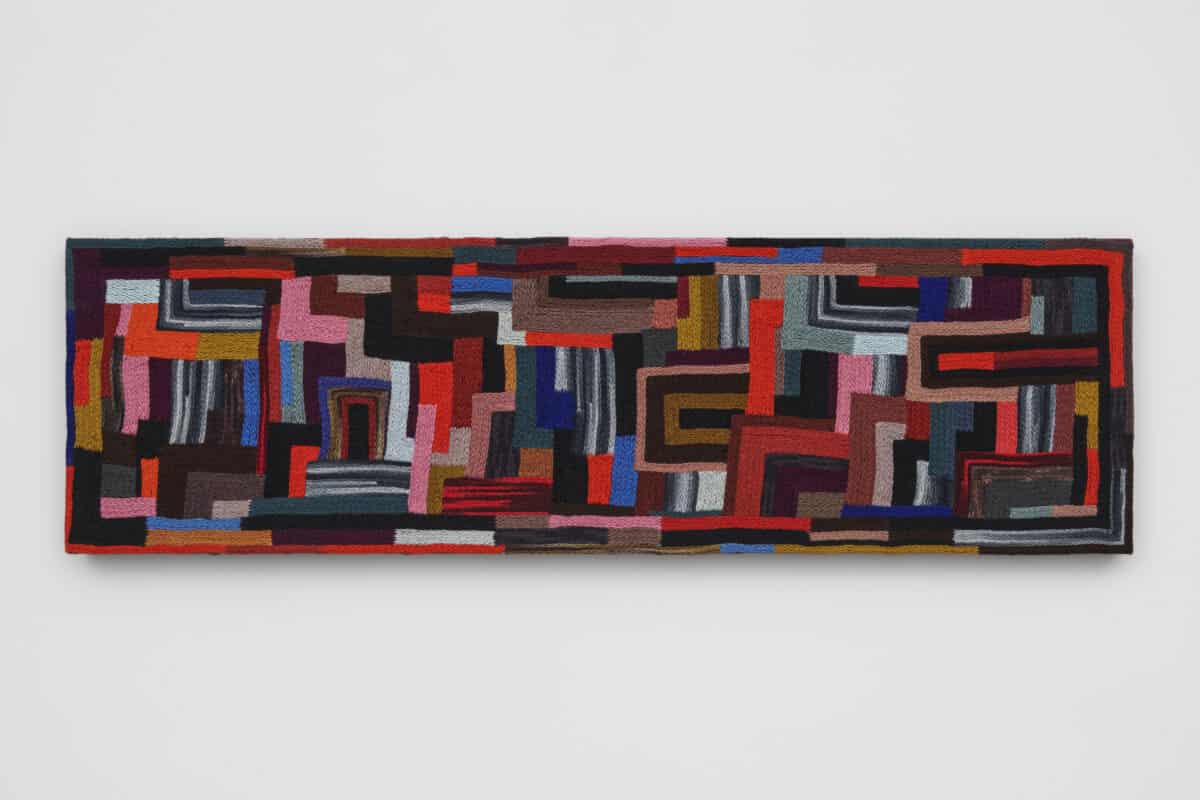
Jan WADE (1952), Breathe , 2021 – 2022, Embroidered linen, 27 x 89.5 x 2.5 cm. © The Artist
Abstract art, indeed, is still widely connected to an all-men lineage, with protagonists such as Wassily Kandinsky and Kasimir Malevich, for the purest abstractions; Mirò, in France, looking at Surrealism; or, for the Abstract Expressionism, the infamous Jackson Pollock.
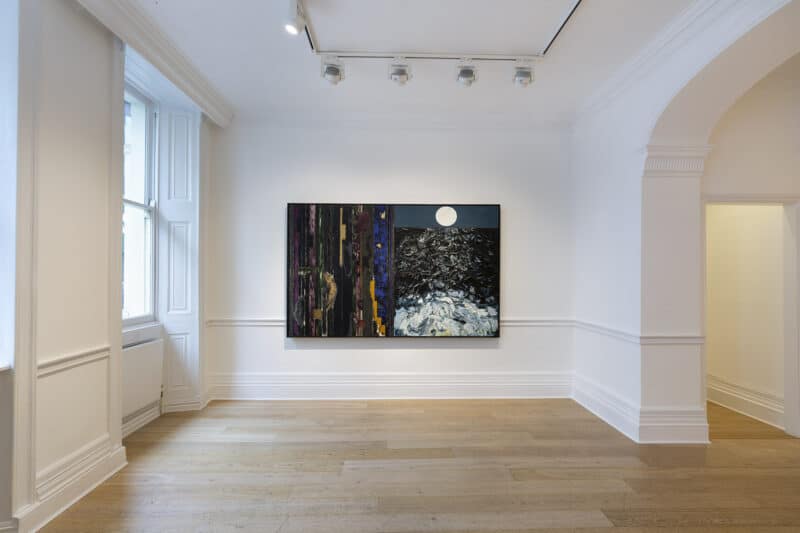
Installation view, courtesy Richard Saltoun, copyright Karen Bengall
Richard Saltoun has long been committed showing the other side of the coin, celebrating the role and oeuvres of many women artists. The title of this exhibition comes from a drawing by British artist Shelagh Wakely depicting two glasses facing each other and inscribed with the words: ‘outside looking in / inside looking out’. The artist, in her career of almost forty years, painstakingly revisited the notion of boundaries, edges and divisions. It is in such a spirit of questioning set divisions and hierarchies, that the exhibition examines how female abstractionists have historically pushed the boundaries of this language, despite being eclipsed by their male counterparts and often left out of dominant discourse.
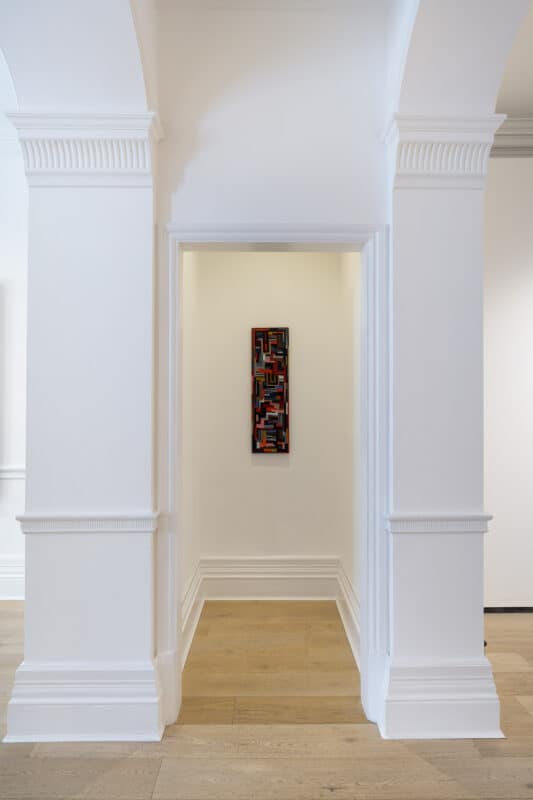
Installation view, courtesy Richard Saltoun, copyright Karen Bengall
The exhibition ranges from intimate, private works to more uncanny ones; from geometric to extremely abstract and fluid shapes; from colourful to black and white visions. There is Bela Kolarova‘s (1923-2010) Business Cards (Diary from the week in the mountains) from 1977, an assemblage of metal frames and makeup where intimate memories extracted from her diaries become abstract colours and lipstick stains. Her practice, indeed, always focused on small details and everyday objects mainly overlooked by others and often relating to the domestic or private sphere.
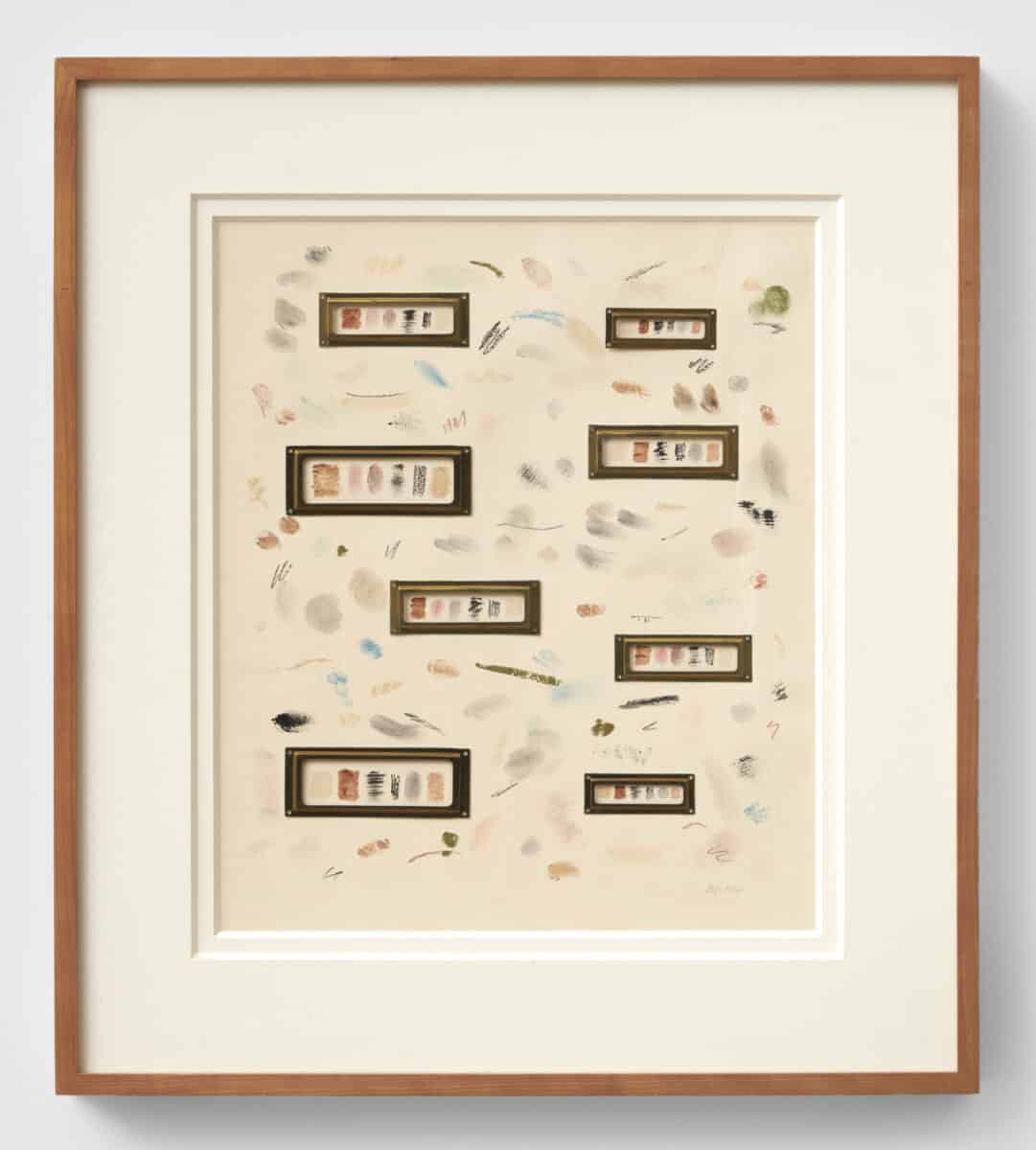
Bela KOLAROVA 1923 – 2010, Business Cards (Diary from the week in the mountains), 1977, Assemblage of metal frames and makeup on card, 37 x 32 cm. © The Estate of the Artist
The painting Space III [Przestrze? III], 1998, by Barbara Levittoux-Swiderska (1933–2019) offers a different kind of perspective. It focuses on the abstraction of forms, turning clean, minimalist lines into airy, flowing entities. This characteristic also stayed with her in her textile practice.
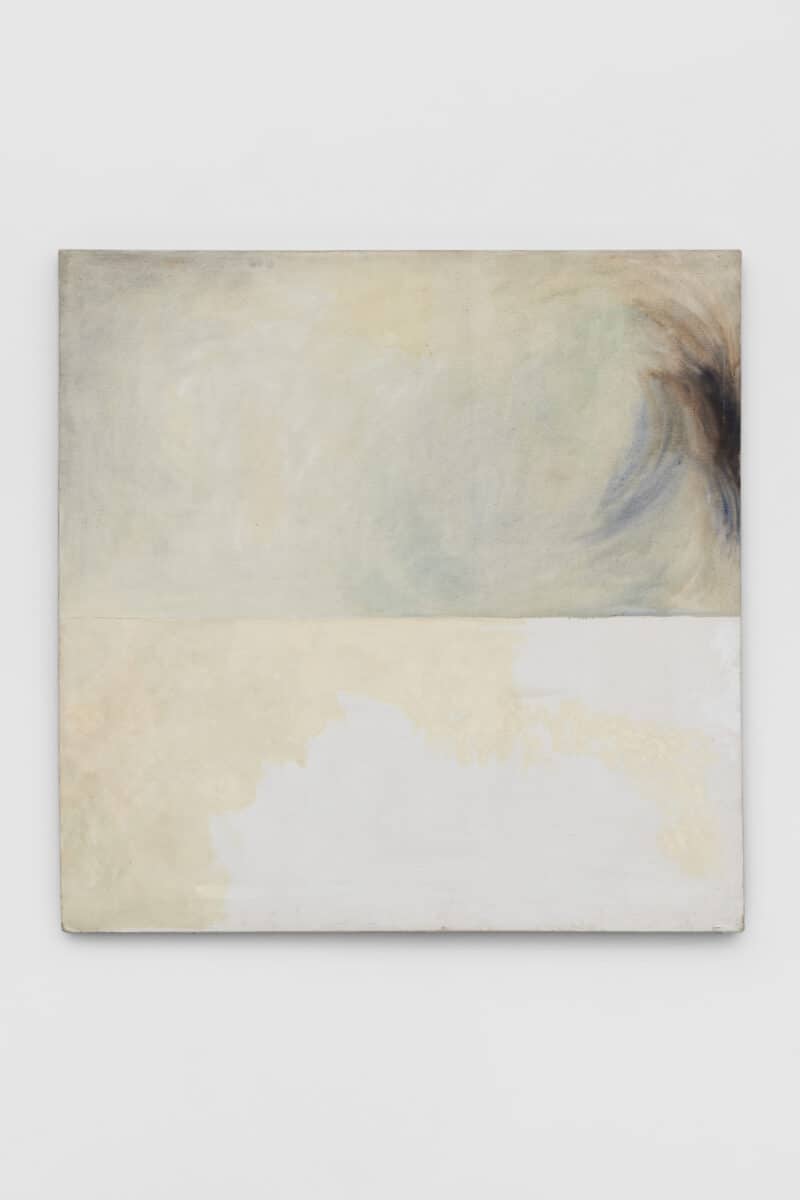
Barbara LEVITTOUX-?WIDERSKA 1933 – 2019, Space III [Przestrze? III] , 1998, Oil on canvas, 120 x 120 cm. © The Estate of the Artist
Shelagh Wakely (1932–2011), starts from themes such as nature, fragility, decay, and the transience of time. Using atypical, organic materials inclined to weathering and deterioration – like shells, petals, fruit, spices, and silk – and a breadth of artistic mediums, Wakely creates magical works that explore the notion of limits and divisions, leaving visible the traces of the natural processes.

Shelagh WAKELY (1932 – 2011), a second enchantment, 1989-90, Gold leaf applied to cut black fabric, 156 x 110 cm ca. © The Estate of the Artist
On show, also a more unsettling work by Annegret Soltau (1946). For instance, in Sich verlieren (to get lost) I + II, 1986, she taped together 70 gelatin silver prints, using needles to scratch the negatives until the image was completely obliterated. She photographed the various stages of the process, ultimately tying the prints together to create an abstract, yet uncanny, pattern. This technique allowed her a visual representation of themes of personal loss, identity, and transformation, which recur in her practice.

Outside, looking in Richard Saltoun Gallery, 41 Dover Street London W1S 4NS, – 20th May 2023
Outside, looking in: Richard Saltoun celebrates the role of women in the evolution of Abstract Art-

